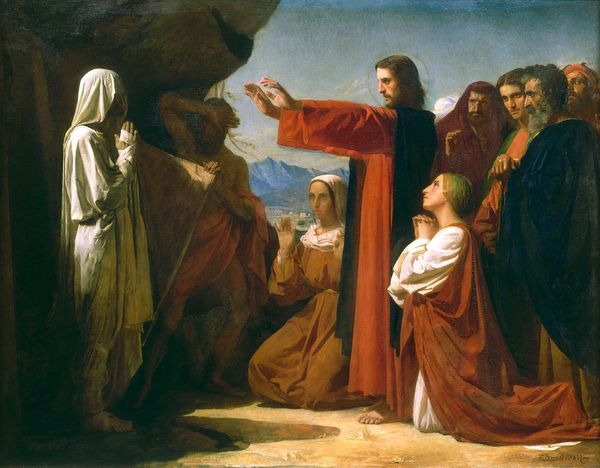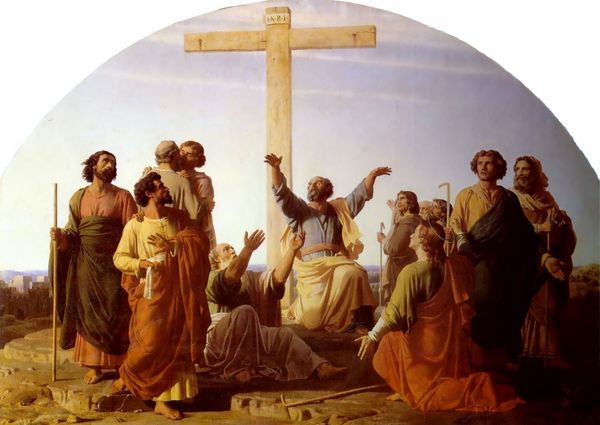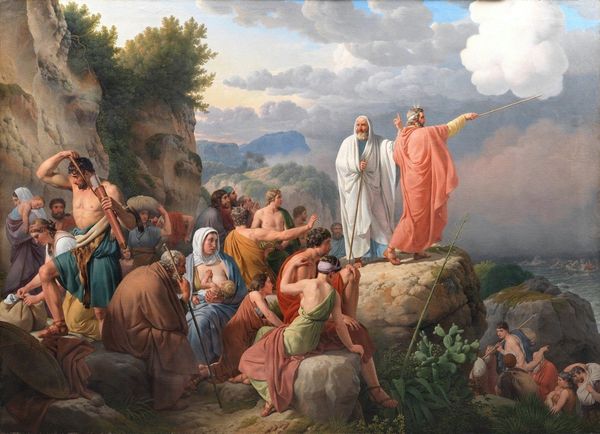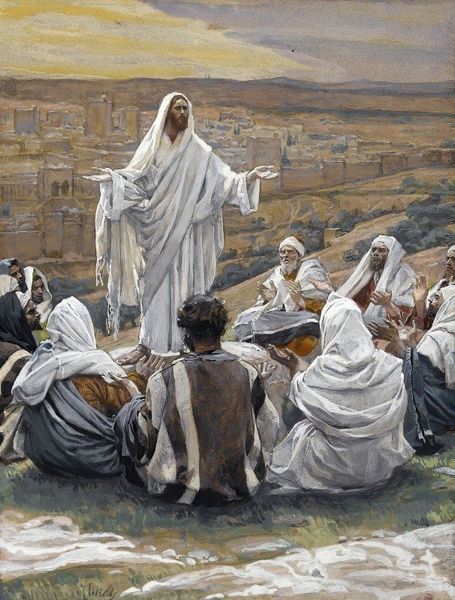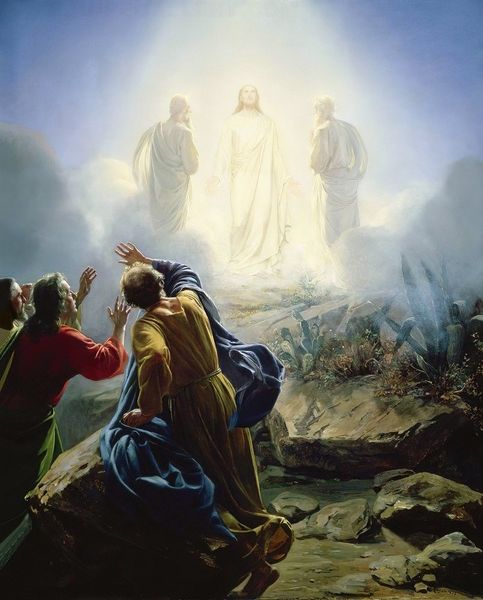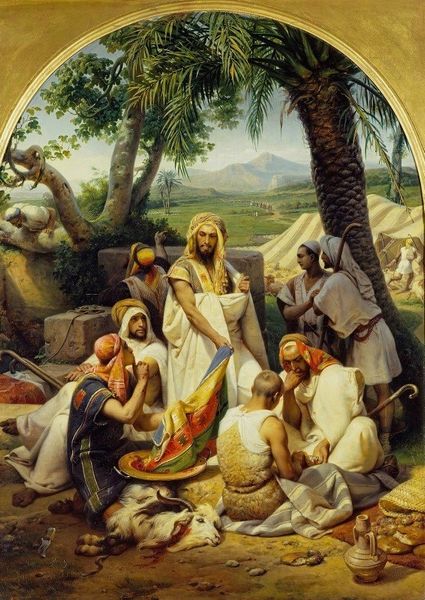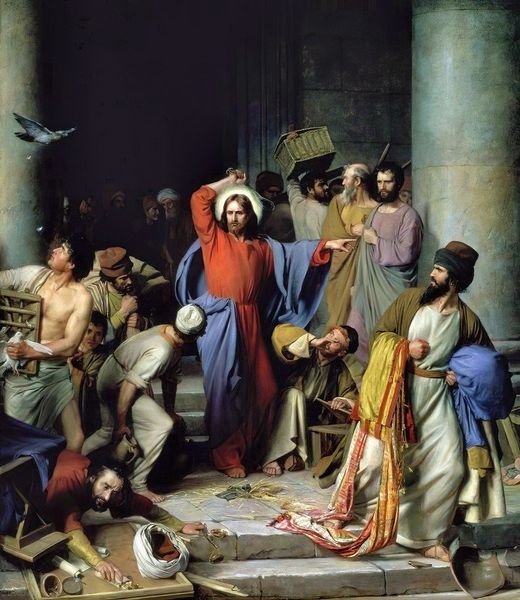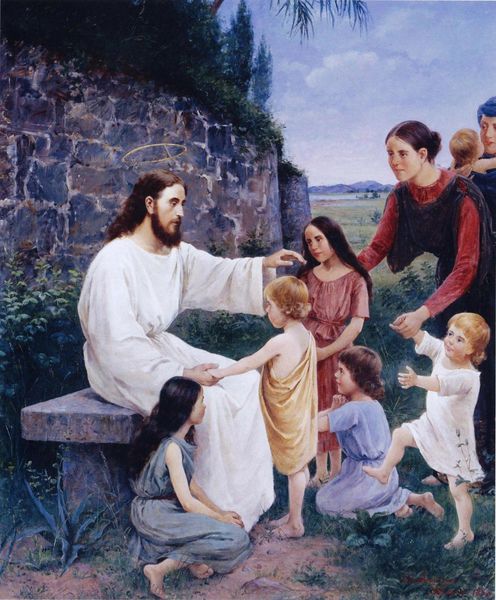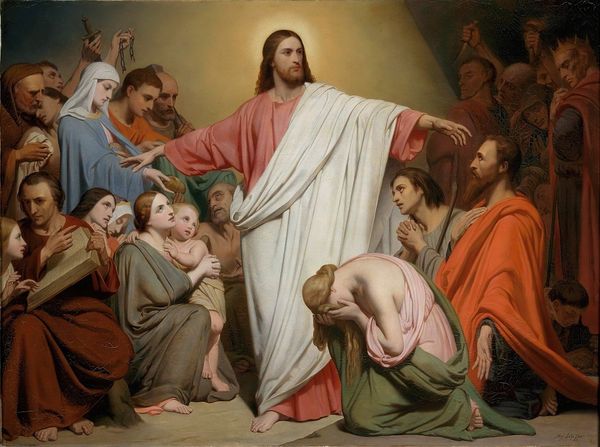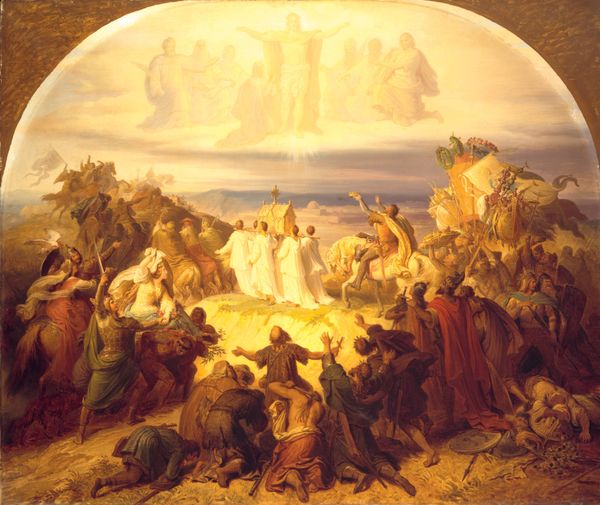
painting, oil-paint
#
painting
#
oil-paint
#
oil painting
#
group-portraits
#
history-painting
#
academic-art
#
realism
Copyright: Public Domain: Artvee
Curator: What strikes me immediately about this piece is the powerful light and clarity –almost an ethereal quality--and how the artist has rendered a massive crowd scene in such a unified manner. Editor: You're right, it's certainly a study in unity of light. What we're looking at here is “The Sermon on the Mount” by Carl Bloch. While the piece itself is undated, Bloch was an incredibly popular Danish artist known for his paintings which often captured scenes from the life of Christ, offering a compelling intersection between religion, social dynamics, and historical representation. Curator: Historical representation is a keen point to explore. The artist’s skill at rendering individual expressions and gestures, almost photorealistic, speaks volumes about faith and hope. The individuals present seem carefully chosen. It raises questions about how the artist conceived the role of ordinary people in this divine moment. Editor: Agreed. Semiotically, the upturned face gazing directly at the Christ-figure almost transcends beyond realism; but is designed to engage the viewer to encourage them to embody their own feelings of faithful rapture. But, the diversity represented within this group is rather romanticized if not idealized. One may critically view the lack of representation or acknowledgement of various societal oppressions prevalent during the life and times of Christ, such as acknowledgement of sex workers or the disabled, as but a few examples. Curator: That's a good counterpoint, especially when considering that Bloch was working in a very particular artistic and social context. But look, overall, it appears that Bloch is seeking something eternal, capturing what’s constant across time—light, hope, faith— rather than the nuances of moment or cultural specificities. The use of light as the focal element draws the eye to the face of Jesus; his divine knowledge represented almost as rays of wisdom, gently illuminating those who will hear them. Editor: And to build off of that light: the shadowed or concealed figures stand not simply to serve an atmospheric rendering of mass within landscape, but those figures that the artist obscures could very well represent the state of doubt, shame, or social alienation—a state of wanting for redemption that this divine man may remedy if one chooses to hear His sermon. I will say though, despite my own readings, the artistry and symbolism at play remains compelling. Curator: Absolutely, and viewing it in a formal way illuminates the true genius in Bloch’s approach. Editor: Viewing with a modern understanding allows us to not only better dissect this piece, but hopefully, see humanity, faith, and light through the eyes of various contemporary understandings.
Comments
No comments
Be the first to comment and join the conversation on the ultimate creative platform.
